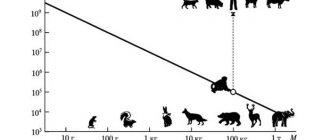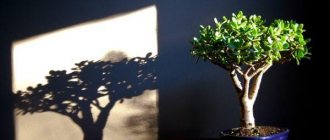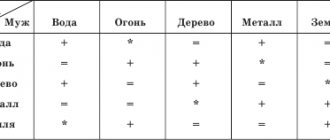| Figs | |
| Fig leaves and fruits (Tunisia) | |
| Scientific classification |
| Domain: | Eukaryotes |
| Kingdom: | Plants |
| Sub-kingdom: | Green plants |
| Department: | Flowering |
| Class: | Dicotyledons [1] |
| Superorder: | Rosanae |
| Order: | Rosaceae |
| Family: | Mulberry |
| Triba: | Ficus (Ficeae Dumort., 1827) |
| View: | Figs |
The fig harvest in the culture is abundant - up to 20 tons per hectare. Figs are unpretentious: they can grow on poor lands, scree, rocks, stone walls. However, powerful trees are found in river valleys, in conditions of good water supply. Figs begin to bear fruit in the second or third year and live up to 30-60, and in some cases up to 300 years. In some places, caprification is carried out to artificially pollinate fig tree flowers.
| International scientific name | |
| Ficus carica L., 1753
Figs , or Widely distributed in the Mediterranean countries, in the Transcaucasus, on the southern coast of Crimea, in the Carpathians, on the Black Sea coast of the Krasnodar Territory, in Central Asia, on the Iranian Plateau. Figs are one of the most ancient cultivated plants, presumably the oldest [2] [3]. Cultivated figs were first grown in Arabia, from where they were adopted by Phenicia, Syria and Egypt. In the 13th century BC. e. played an important role in the agriculture of the kingdom of Pylos. It came to America only at the end of the 16th century. |
Botanical description [edit | edit code ]
Tree with light gray, smooth bark.
The leaves are large, alternate, 3-5-7 palmate-lobed or separate, rigid, with deciduous stipules. In the axils of the leaves, shortened generative shoots develop, bearing inflorescences of two types - caprifigs and figs (syconium). They develop on different trees and are characterized by the fact that the axis grows into a spherical-oval formation with a hole at the top and a cavity inside, where small, inconspicuous dioecious flowers are located. Caprifigs
- smaller inflorescences containing male flowers: Flower formula:
∗ PC a ( 5 ) A 3 ( 3 _ ) ;_<(5)>;A_<3(<3>>)>> > [6] and Figs
- female gall flowers with short styles: ∗ PC a ( 5 ) G ( 2 _ ) ;_<(5)>;G_<(<2>>)>> > [6] - large inflorescences in which male flowers are reduced, and the female ones have long columns, and after fertilization they form single-seeded fruits - nuts [
clarify
].
Figs have a very interesting pollination: it occurs with the help of small black blastophagous wasps (with the exception of artificially bred parthenocarpic varieties), which transfer pollen from male trees to female ones. The blastophagous wasps themselves cannot reproduce without figs. A female blastophagous wasp, fertilized by a wingless male inside a male fig inflorescence, emerges through a hole at the apex of the male inflorescence. At the same time, it takes pollen from male flowers onto its body. In search of male inflorescences, some of the females end up inside the female inflorescences. The pollen brought by them falls on the stigma of the pistils, due to which pollination of flowers occurs [7] [8] [9]. Judging by paleontological data, such a pollination system was formed at least 34 million years ago [10].
The figs develop into juicy, sweet, pear-shaped fruits with seeds inside. They are covered with thin skin with small hairs. At the top there is a hole - a peephole, covered with scales. Fig fruits range in color from yellow to black-blue, depending on the variety. Yellow-green fruits are more common.
Chemical composition [edit | edit code]
Fresh figs contain up to 24% (according to other sources, up to 75% [11]) sugars (glucose, fructose), and dried ones - up to 37%. The fruits contain organic acids, tannins, proteins, fats, and the leaves contain coumarins (the main ones are psoralen and bergapten) [11].
Fresh fig fruits contain up to 1.3% proteins, 11.2% sugars, and only 0.5% acids. In dried figs, the proportion of protein increases to 3-6%, sugar - to 40-50%, which gives them a deep sweet taste and causes a feeling of satiety (calorie content of dried fruits - 214 kcal per 100 g). They also contain vitamins (β-carotene, B1, B3, PP, C) and minerals (sodium - 18 mg per 100 g, potassium - 268, calcium - up to 34, magnesium - up to 20, phosphorus - up to 32) . Dried figs contain almost as much potassium as dates; their potassium content is surpassed only by nuts. Unripe fruits contain caustic milky juice and are therefore inedible.
Dried fruits are high in calories and contain 50-77% sugars [12].
Beneficial features
The fig tree is an excellent source of essential oils that help oxygenate the blood and control blood pressure. A large amount of tryptophan normalizes the functioning of the human brain, so it is very useful for people in creative and thinking professions to consume figs at least once a day. In addition to vitamins A, B and C, there are potassium, magnesium, calcium salts necessary for humans, other minerals and organic fatty acids, carotene, pectin, proteins and almost all types of sugar.
Economic importance and application [edit | edit code]
Figs are consumed fresh, dried and canned. Jam and jam are made from fresh fruits. The fruits contain many very small seeds; the taste of the fruits is sugary or moderately sweet. Light ones are more suitable for drying, with golden skin and white flesh, about 5 cm in diameter. The fruits are dried for 3-4 days under the sun. It is believed that the smaller the fruit, the tastier the fig. If each fruit contains more than 900 seeds, this is a very good, tender fig. If less than 500 - very mediocre. There is also a seedless variety that does not need pollination with the help of tiny wasps, but its fruits are not as tasty and juicy.
Use of figs in cooking
If there are no fresh figs on the horizon, I take dried or chocolate ones.
I confess to you, dear reader, that I feel extremely sorry for the thermal processing of this wonderful product, and therefore I eat it only in its original form and try to buy it in regions where figs grow.
Of course, my diet also includes dried fruits of this plant, since, alas, I cannot eat fresh ones all year round.
I advise you to buy dry figs only in raw food and organic stores - this way you will have a better chance of purchasing a product that has not been treated with chemicals.
Please note that the manufacturers of figs that are on the shelves in supermarkets do not even hide this - the composition always indicates the substance with which the fruit was stuffed. All you have to do is turn the packaging over and carefully read the ingredients.
Below I will definitely tell you how to choose fresh and dried figs so that they not only please you with their taste, but also benefit your body. Now let's talk about what this miracle of nature can be combined with.
Wine lovers use figs as a snack and even make alcohol from it (wine, tinctures, liqueurs), but I hope, like me, you don’t drink alcohol, and therefore I suggest you, dear reader, try adding these fruits to a salad.
A snack with figs can be more than just sweet, although it fits perfectly into green smoothies, smoothies and salads. Try combining it with avocado, soft cheese, nuts, celery, asparagus, mushrooms, cherry tomatoes, paprika, coconut, chickpeas. Play with dressings using honey, lemon juice, natural vinegar, and various unrefined vegetable oils.
For spices, you can use dried Provencal and Italian herbs, Himalayan salt, allspice, and fresh ginger root. Figs also go well with herbs - cilantro, mint, basil, lettuce, spinach, arugula, celery. I think in some cases you can add a little green onions or wild garlic to a salad with these fruits - you get a very piquant combination of flavors.
Figs, like other dried fruits, can be stuffed with nuts and pieces of cheese, and then served with sweet sour cream sauce. Unless, of course, you still consume dairy products.
I know that figs are often added to various fruit and berry sweet and sour sauces: apricot, cranberry. Also, sometimes it serves as the basis for such a fragrant dressing, which is eaten with spaghetti or vegetables - baked, fried, steamed.
You can include fig pieces in vegetable stew, as well as in cream soup - it will add a sweet, original note to the first dish of pumpkin, broccoli, cauliflower, and mung bean.
In some countries, a coffee surrogate is made from these fruits - a coffee drink.
I have been eyeing fig jam for a long time, which is sold in one of the large stores in my city. Through the transparent walls of the jar, such familiar and beloved seeds look at me, but I am in no hurry to buy it, because I am afraid of being disappointed. Still, I am in love with fresh figs, and not with that mess that is drowning in white sugar.
Pastilles, jams, confitures, marmalade, and marmalade are also prepared from these fruits. They are used as a filling in gingerbreads, cookies, and candies. I confess, at one time I could not pass by the chocolate-covered figs - they were in pieces and crunched so deliciously in my teeth.
If you still eat flour, try making strudel using these fruits. In Andalusia, fig bread, also called fig bread, has long been baked. It is believed that the tradition of preparing this type of pastry was adopted by the Spaniards from the Arabs. In addition to the fruits of the fig tree, almonds, anise, cinnamon and cloves are put into this bread, but no sugar is added - the sweetness of the fruit is enough. Since such a product is stored for quite a long time, it was previously used as canned food so that the harvest would not be lost.
Of course, it is best to eat these fruits raw without the need for storage. Could there be anything tastier and healthier than what nature itself created?
Back to contents
Medicinal uses[edit | edit code]
Fig leaf (lat. Folium Ficusi caricae) is used as a medicinal raw material, which is collected after the fruits are removed in September - October and dried. The raw material is used to produce the drug “Psoberan”, which is used to treat baldness and vitiligo [11].
Figs have been used in medicine for a long time. They were used as a remedy for coughs and throat diseases, for which purpose the fruits were brewed with boiling water or hot milk. The pulp of the fruit has a good diaphoretic and antipyretic effect. In addition, there is more iron in figs than in apples, so it was recommended for patients suffering from iron deficiency anemia. Since the leaves contain coumarin (a substance that increases the body's sensitivity to solar radiation), they have also found use. Figs are highly nutritious, soothe heat in the body and quench thirst. Figs are useful for rapid heartbeat, bronchial asthma, cough, chest pain, coarsening of the pleura; Eating it with almonds helps with severe weight loss. Dried figs have a laxative effect. Fig syrup is a tonic for children: it increases their appetite and improves digestion. Fig syrup helps with muscular rheumatism, skin diseases, kidney and bladder stones, increased liver volume and pain (for colds in the female genital organs).
Fig fruits are part of the medicine “Kafiol” [11].
Losing weight effectively and usefully
Regular consumption of figs helps to reduce and stabilize weight, as it contains a large amount of fiber and fibre. Thanks to them, the body is cleansed of waste and toxins. Despite the low calorie content of fresh fruits, they quickly saturate the human body, reducing the feeling of hunger for a long time. 100 grams of fresh figs contain only 49 kcal, but you need to be careful with dried fruit, as its calorie content increases almost seven times.
Figs are useful for expectant mothers. Thanks to the large amount of useful substances contained in the fruit, the baby develops correctly. A large amount of iron is an excellent prevention of anemia. Pectin and fiber help cope with flatulence and constipation. It is also known that figs increase lactation and are an excellent remedy for the prevention of mastitis.
The fig tree is a cure for men’s diseases too. Fig tincture helps to enhance male power many times over and effectively cure prostatitis. All you have to do is pour a glass of boiling water over five fruits and let it brew. The tincture should be drunk twice a day.
Houseplant [edit | edit code]
In the middle and northern regions of Russia, figs are grown indoors. It has large, lobed, beautiful leaves that fall off in the winter. When grown indoors, it is capable of producing fruits that often ripen in late summer or autumn, sometimes in spring. Figs are propagated by winter (without leaves) and summer (green) cuttings. Winter cuttings are cut from one or two year old shoots and planted in early spring, before buds open, in light sandy loam soil. Green cuttings are planted in late spring - early summer in sand and kept in a humid environment under a glass or other glass cover until rooting. Both cuttings take root easily in a warm place. Rooted cuttings are planted in pots.
In summer they are kept on bright windowsills with plenty of watering, in winter - in a cool place with very moderate watering, as long as the soil does not dry out at all. Until the age of three, annually in the spring, before growth begins, they are transplanted into sod-humus soil. Adult plants are transplanted after two to three years into a wide container in heavier soil.
The fig tree is a fruit tree, better known to us as the fig. The homeland of the fig tree is Asia Minor and the Mediterranean. The tree reaches 11 meters in height, although on rocky soils it often grows as a shrub. According to the Bible, after the Fall, Adam and Eve made themselves clothes from the leaves of the fig tree (Genesis, chapter 3, verse 7). In the symbolism of the Old Testament, the fig tree is an image of peace and Divine favor.
To understand any passage in the Bible, you need to know the context. Does anyone else talk about fig trees? Yes, there are such places. About six months earlier, Christ told the following parable: “A man had a fig tree planted in his vineyard; and came to look for fruit on it, and did not find it. And he said to the vinedresser: “Behold, I have come for the third year looking for fruit on this fig tree, and I have not found it; cut it down: what does it occupy the land for?” But he answered him: “Sir! leave it this year too, until I dig it up and cover it with manure: will it bear fruit? if not, then next year you will cut it down” (Gospel of Luke, chapter 13, verses 6-9).
Jesus often used parables in His preaching, especially when speaking to the common people. How could it be otherwise possible to reveal to people the greatest secrets of the spiritual world, without relying on everyday realities understandable to everyone? Moreover, these realities often served as religious symbols for the Jews. The vineyard and fig tree were understood not only as agricultural crops. In the Old Testament, Israel is called “the vineyard of the Lord” and “the fig tree.” This tree also symbolized peace and God's blessing to the people of Israel. Most interpreters of the Gospel believe that this parable implies a kind of dialogue between the Persons of the Holy Trinity - God the Father (the owner of the vineyard) and the incarnate Son of God (the vinedresser) about the fate of Old Testament Israel, represented in the image of a fig tree. For three years the fig tree (Israel) could not bear fruit. Why exactly three years? This is how long Jesus preached to the Israelites before he told this parable.
Fig tree - an ancient tree
The fig tree is called differently - fig, fig tree, fig, wineberry. Fig berries contain a lot of vitamins and sugar. From one fig tree you can collect up to 100 kg of berries. The fig tree belongs to the ficus family. This tree has a powerful trunk, shiny hard leaves and a crown that provides shade and coolness. The inflorescences of the fig tree are called sycopies; they are pear-shaped or round berries, hollow inside. Tiny, inconspicuous flowers of the fig tree are located inside the berries; you can see them if you break the inflorescence.
Fig tree, fig tree (Figs)
© Hedwig Storch
The fig tree is a very ancient tree. Its fruits were collected by primitive people in the Paleolithic era. The fig tree is the only tree mentioned in the Old Testament story of Adam and Eve. “They sewed fig leaves and made aprons for themselves” - this is what the clothes of the first people looked like. The ancient Phoenicians worshiped the Mediterranean fig tree as a deity.
At the fig tree there was communication with God; it was a place of prayer. Devout Jews also said daily prayers under the fig tree. In the life of the ancient Jews, the fig tree was of great importance; in the Holy Scriptures it was proclaimed as a symbol of the Jewish people. And the withered Fig Tree was considered a harbinger of God’s wrath that would fall on the wicked people.
Fig tree, fig tree (Figs)
© H. Zell
In ancient Italy, the fig tree was a fertility cult. The fruits of the fig tree played a huge role in the life of the inhabitants of Italy; the beginning of autumn was called “prima figa” (“first fig”). Wreaths made of fig leaves served as decoration for participants in Roman harvest festivals. Fig trees were considered sacred trees and they grew in front of temples. The mythical ideas about the fig tree among the Romans and Greeks are very similar. The fig tree was brought to Italy from Greece. In the ancient world, Greece was the main producer of figs.
And today archaeologists find remains of dried figs. 44 varieties of figs bred in Hellas were considered the best in the Mediterranean and brought great income to the Greek states. The most ancient statues of the winners of the Olympic Games were carved from the wood of fig trees. In Sparta, Dionysus the Figurine was revered; his images, carved from fig wood, were kept on the island of Naxos. Legend says that the art of growing figs was passed on by the fertility goddess Demeter to the Eleusian king Phitalus.
Fig tree, fig tree (Figs)
© Kurt Stueber
Since ancient times, fig trees have also been grown in Egypt. The Egyptians considered the syquimore (fig) a sacred tree, the embodiment of the sky goddess Nut. In India, the fig tree was also revered. On ceramics, seals and prints you can see an image of an Indian fig tree - peepal - a prototype of the Heavenly Tree, standing on a platform with a goddess in a fork, surrounded by mythical characters and priests.
Sticks for lighting the sacred fire and vessels for worship were made from fig tree wood. In India, to this day there is a cult of the sacred fig tree. In India, the fig tree is considered the throne of the god Vishnu, who in the form of a young man sits on its branches. In the ancient period, it was believed that the first cultivated fruit that humanity received was the fig tree; it was the first to lead humanity to a better life.
Since ancient times, people have valued and loved this tree for the nutritional and taste qualities of its fruits.
The range of indoor primroses allows you to choose compact or more lush plants with flowers of various colors. Stemless primrose blooms in winter or spring . Graceful mini-stars of delicate softish primrose bloom on huge bushes - up to 45 cm. Compact common primrose in pots looks like mini-bouquets.
Very lush bushes with flowers up to 7 cm in the primrose obraconical . But the mistakes in growing all primroses, as well as the care features, are similar. This plant loves coolness, but is not so capricious that with diligence and attention it will cause great difficulties. Let's take a closer look at the main mistakes that can be made when growing primroses indoors.
10 mistakes when growing primroses indoors
The necessary conditions have not been created
Primrose bushes in mini-pots fill the shelves. But only those who will keep the plant cool during flowering and provide regular care without interruptions in watering will be able to admire their long-term flowering.
Primrose is not the best candidate for interior decoration inside rooms. You shouldn’t consider her a “living bouquet” that can be used to decorate a coffee table, because she is extremely light-loving.
Little sun
Primrose tolerates shade well in gardens. In rooms, even on window sills, she is not always comfortable - only on western or partially western windows, in extreme cases - on eastern ones. Primrose tolerates direct sun only in the early morning or evening; on a south window it suffers from the heat and gets “burnt.” But even on the north side it can quickly turn pale and “fall apart”, stretching out from lack of light.
Insufficient air humidity
Despite their non-tropical origin, primroses love high air humidity. They don’t need 70-85%, but medium or medium-high levels will allow the plant to maintain the brightness of its flowers and leaves. You cannot increase the humidity by spraying; only humidifiers or trays with wet expanded clay, moss, and pebbles are suitable.
Fig tree. Interpretation of the Blzh. Theophylact of Bulgaria
The Lord often worked miracles, and His miracles were always beneficial. He had not previously performed a single miracle to punish anyone. In view of this, so that no one might think that He cannot punish, the Lord manifests such punitive power here, but as a lover of mankind, He does not show it in public, but on a tree, just as before on a herd of pigs. He withers up the tree to teach people reason. The disciples are amazed - and thoroughly. This tree is very succulent; the miracle is all the more revealed because the tree dried up instantly. The fig tree signifies the Jewish synagogue, which has only leaves, that is, an ostentatious letter, but has no spiritual fruit. Likewise, every person devoted to the pleasures of this life is like this fig tree: he does not have spiritual fruit for the hungry Jesus, but only leaves, a temporary and transitory appearance. Such a person will hear a curse on himself; for it is said: “Depart from Me, you cursed, into the fire” (see Matt. 25:41). He will also be dried up: during his torment in the flame, even his tongue will dry out, like the rich man of the Gospel.
The Meaning of the Fig Tree in the Bible
Found in the Old and New Testaments, the fig tree had a rather positive meaning, although it was the leaves of the fig tree that covered Adam and Eve after the Fall. And yet the expression “to live under the vineyard and fig tree” meant to have peace and prosperity (see: 1 Kings 4:25; 2 Kings 18:31; Micah 4:4; Zech. 3:10). The healing properties of the fig tree were praised, and for the teachers of Israel the tree was a symbol of wisdom.
So, the fig tree was an image:
- Wisdom;
- Healings;
- Well-being;
- Prosperity;
- God's blessing.
For the Lord, his fig tree and the garden that he cultivated were the people of Israel.
In the New Testament we read about the fig tree in the period leading up to the execution of Christ on Calvary. Jesus spends the last days of his earthly life with his disciples in Jerusalem. Jesus spends the night on the Mount of Olives. We find out what happens one morning when Jesus returns from the suburbs:
“In the morning, returning to the city, he became hungry. And seeing a fig tree along the road, he approached it and, finding nothing on it except leaves, said to it: Let there be no fruit from you henceforth forever. And the fig tree immediately withered” (Gospel of Matthew, chapter 21, verses 18-19)
Did Jesus really curse the tree just because there was no fruit on it? The essence of this story is much deeper. Many are outraged by the fact that Christ destroyed the tree. Isn't the Lord the giver of life? How can He destroy a living tree?
Use of figs on the farm
This is probably what heaven smells like!
Fig wood has good qualities - dense and quite strong, does not crack during the drying process and is resistant to rotting. Due to the fact that it can be processed without much effort, it is used for the manufacture of various turned products, small souvenirs and amulets. Residents of countries where this tree grows use it as fuel.
The leaves of this plant are also used, which contain various organic acids, essential oils, flavonoids and tannins. They are cut with a knife and then air dried for 5-6 days in dry weather.
And infusions and decoctions of fig tree leaves are widely used in folk medicine - to treat sore throats and remove kidney stones, for cystitis and scabies, for trachoma and furunculosis.
Official medicine also knows about the healing properties of fig leaves, and therefore based on them they make the drug “Psobean”, which is effective for various skin lesions, including vitiligo.
Since ancient times, healthy and aromatic essential oil has been extracted from fig seeds, which is widely used by cosmetologists and perfumers in their work. This unique substance is added to aromatic compositions, as well as to skin and hair products, and natural soaps. Once upon a time, Eastern women valued such oil as worth its weight in gold and carefully stored it in small clay pots.
If fig seed oil has been cold pressed, it has a number of valuable properties and, above all, not only effectively moisturizes the skin, but also helps its cells retain life-giving moisture within themselves. In addition, this product perfectly protects the face and body from the negative effects of sunlight and pigmentation. After regular use of fig seed oil, the skin becomes soft, elastic and matte.
It also effectively cares for hair, restoring its natural shine and strength. This is especially true for strands damaged by perms, heat treatment (iron, curling iron, hair dryer), as well as dyeing.
Moreover, you can grow a fig tree - this type of ficus - at home, or you can make it part of your garden plot.
Good drainage, high-quality fertilizer and optimal soil moisture, plenty of light and enough heat, no drafts, timely control of mites and rot - and then, most likely, you will be able to harvest a mini-harvest of mini-figs.











